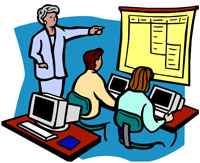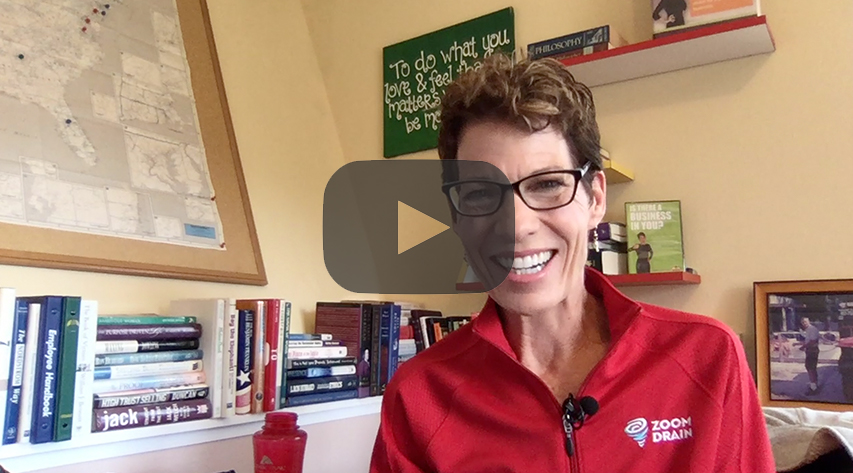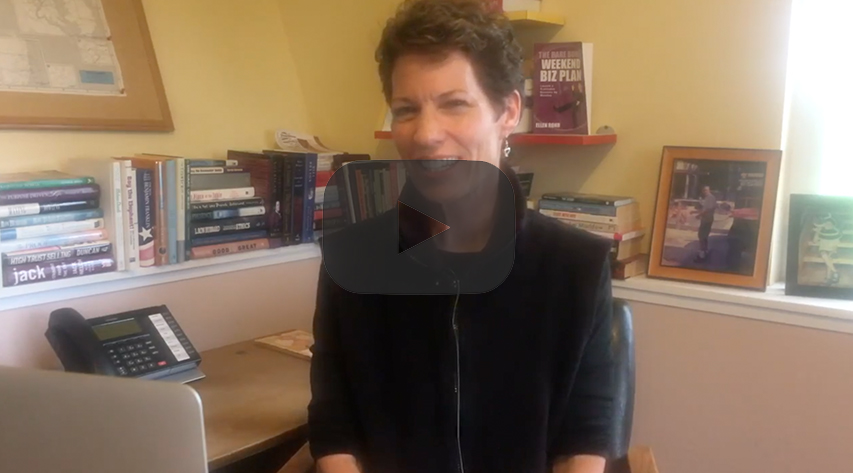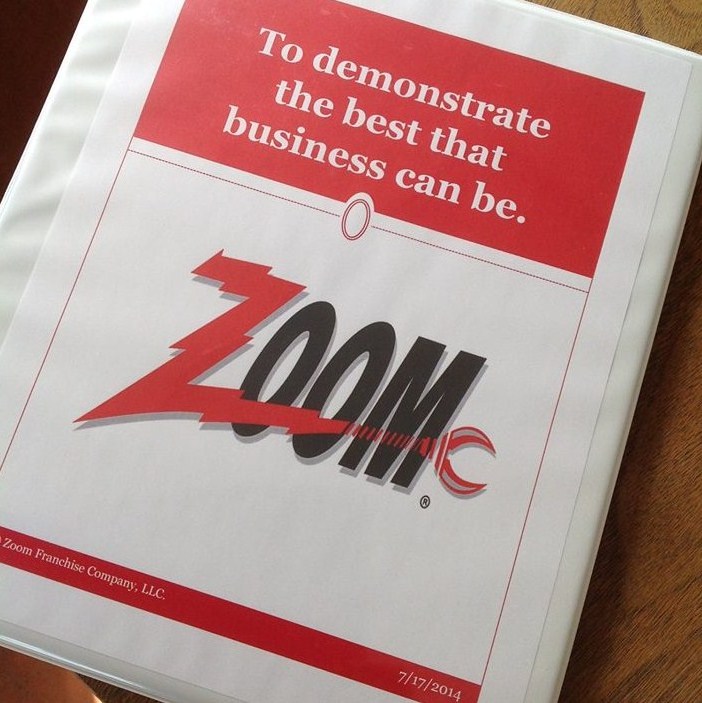 You know, you have to TRAIN your employees. Right? Training is a funny word. It gets used a lot, especially by frustrated business owners. But few people know what it means. Does it mean “motivating”? Does it mean “confidence building”? Does it mean hitting employees with a newspaper or dangling a carrot?
You know, you have to TRAIN your employees. Right? Training is a funny word. It gets used a lot, especially by frustrated business owners. But few people know what it means. Does it mean “motivating”? Does it mean “confidence building”? Does it mean hitting employees with a newspaper or dangling a carrot?
One of Funk & Wagnals’ definitions of the word train…To make obedient or capable of performing tricks, as an animal.
Yikes!
Funk & Wagnals also offers this definition…To render proficient or qualified by instruction and drill.
That is a good working definition of training.
Training will not make all your problems disappear. Training is not the answer to every question. Training isn’t, by definition, motivating. Training won’t turn your service techs into super sales machines. Training provides the information necessary to do the job. (Whether or not the job is done well, or done at all, is something else.)
As a Small Shop Owner, one of your responsibilities is making sure that you, and the people who work for you, have the information necessary to do the job. The job may be selling, cleaning, filling out paperwork, etc. You are the trainer. Do you have any idea what you are doing? Fear not…I am here to help!
Bare Bones Training Basics
Consider the US Marine Corps. Their slogan: We’re looking for a few good men. (And, a few good women!) Notice that the Marines don’t require candidates to have weapons handling experience, foreign language skills or be in excellent physical condition. They are looking for good people, and then they will train those people to the USMC standards to do all kinds of specialized tasks.
In this column, you’ll learn Bare Bones Training Basics. Basically, the better your training program, the less skilled your prospective employees need to be. In other words, the more and better training you do, the more choices you have when it comes to building your team…and getting things done.
If you don’t have a formal training program, then you must depend on finding employees who already know how to do the job you are offering. That really reduces your hiring choices.
Also, you can be put into the uncomfortable position of being held hostage by your employees.
“Oh, I can’t lose Jody! She is the only employee here who knows how to operate our accounting software! I’ll just pretend I didn’t notice that she came to work 45 minutes late.”
You are not living up to your values when you lower your standards. Your integrity is on the line. You are looking for a few good men and women. You can train them. Start by learning training basics.
Responsibilities vs. Procedures
I’m a believer in creating a working Organizational Chart and Position Descriptions. Essentially, Position Descriptions list the Responsibilities for each Position. Responsibilities are WHAT to do. Procedures are HOW to do it. For each listed Responsibility, there should be one or more Procedures. Procedures are the curriculum for your training program. Procedures are lists of behaviors that you are teaching your team members to DO.
Level One and Level Two Training
Level One is the training you provide so that team members can perform their assigned Procedures to the minimum acceptable level. Level One Training ends when your employee can do the Procedure well enough to be held accountable for it.
Level Two is the training you provide to enhance your employees skills and abilities beyond the minimum levels. Level Two Training is for increasing performance and efficiency.
For example: You could teach me how to do a “free throw” shot in basketball. I could learn what line to stand behind and which hoop to aim at when I throw the ball. That’s Level One training on the Procedure. I could “sign off” on that after a few minutes of training.
To get good at shooting “free throws” I would work on my technique. I may need to try holding the ball in different ways. I may do some specialized weight training. I may need to practice shooting the ball 50 times in a row. That’s Level Two Training.
Depending on the Procedure, you would decide whether or not to offer Level Two Training. For instance, the Procedure for Turning on the Warehouse Lights requires no additional training. When it comes to selling Procedures, a Salesperson is well served to continue Level Two Training…forever!
Start by making sure all your team members are trained on the Procedures – Level One. Then, add the Level Two Training.
The Training Process
These are the Bare Bones basic steps of the Training Process. The process is the same for Level One and Level Two Training.
- “I’ll do it.” As the trainer, explain and demonstrate the Procedure. Use easy-to-understand words. You can do the Procedure yourself, draw a diagram to illustrate it or show a movie of the Procedure. Try more than one approach. Refer to the written Procedure as you go.
- “Now, you do it.” Ask your trainee to demonstrate the behaviors and duplicate the Procedure. Take as much time as you need to make sure that he can do the Procedure and explain the reasons for doing it.
- Role Play. Now, act it out together. Take turns playing the customer. This will help you both see how the Procedure serves the customer. Role Play is a dress rehearsal before the actual performance.
- Real World. Send your trainee out into the world. Observe the required behaviors in real time…at the shop or in the field. Ride-along and catch your trainee doing the Procedure correctly.
- “Sign Off.” “Sign off” on the Procedure when you and your trainee are both comfortable with his understanding of the Procedure and his ability to perform it. Both of you should initial and date the Procedure. File a copy in their employee file.
Use the “sign off” to mark the end of the Training Process. As people learn new skills, make sure they are acknowledged…with a handshake, with a diploma or with a standing ovation at your next company meeting. Mary Kay Ash, founder of Mary Kay Cosmetics, understood that people are hungry for praise. Her company has grown to multi-billion dollar sales by praising the representatives for every accomplishment along the way. From personal notes to diamond rings to pink Cadillacs, Mary Kay showers her team with rewards for good performance.
Level One Training “Sign Off” and Accountability
Once an employee has “signed off” on a Procedure, something really wonderful happens. The team member is now responsible for getting it done. Accountability begins. From the point of the “sign off” any failure to do the Procedure is not a lack of training…but a lack of willingness. While he may improve his skills through Level Two Training, as of the Level One “sign off” he is expected to perform the behaviors to acceptable standards. And he should be held accountable.
You have the right and the responsibility to require team members to play the game your way. Hold them accountable. Good people like accountability.
Measure the effectiveness of your training by tracking performance and by keeping score. Do the numbers improve? Are you reaching your Goals? Are team members performing the Procedures as intended? Does the training program support your mission, vision and values? If so, you know you are on the right training track!
“You can have whatever you want in life if you help enough other people get what they want.”
Zig Ziglar
















